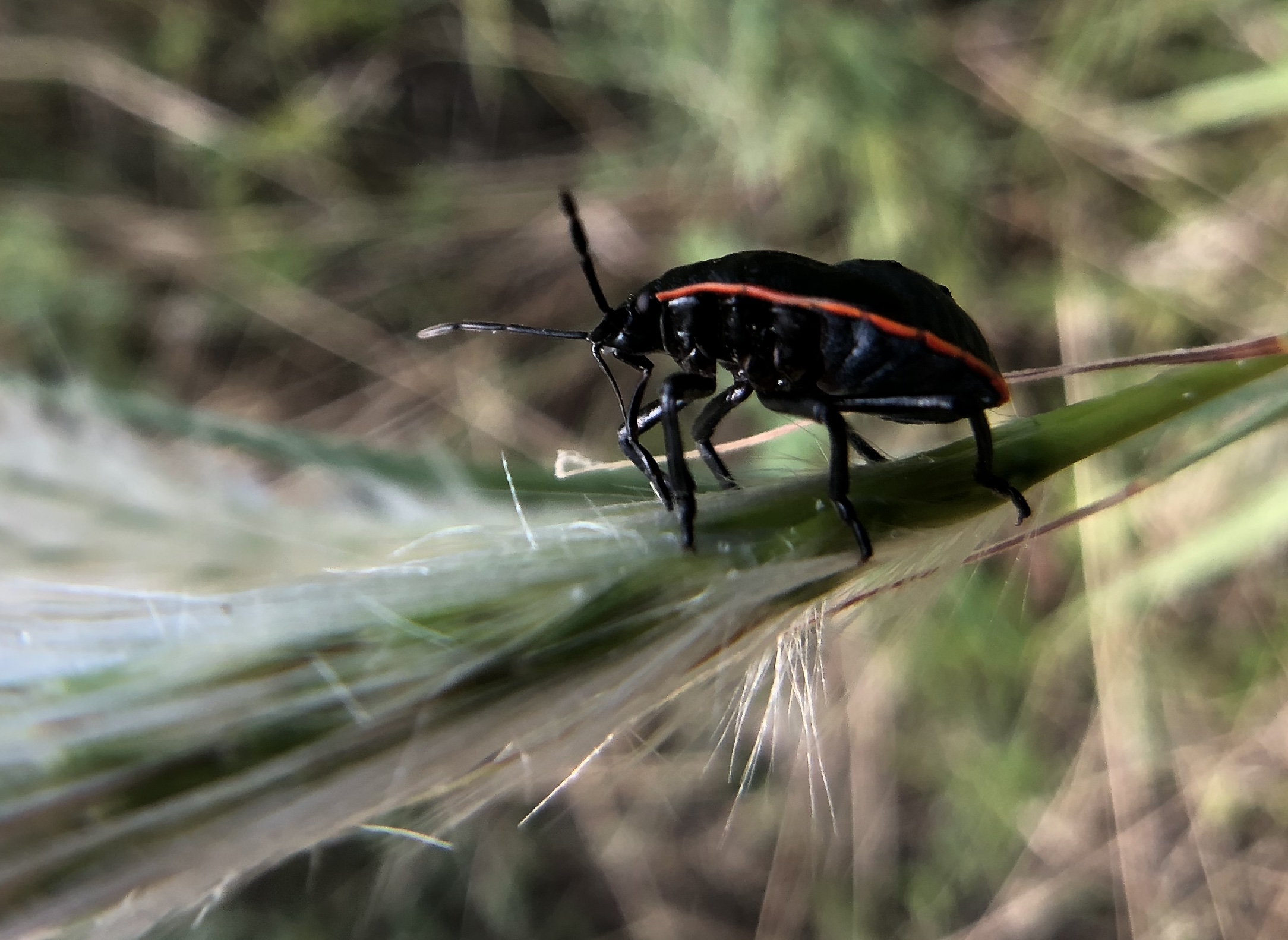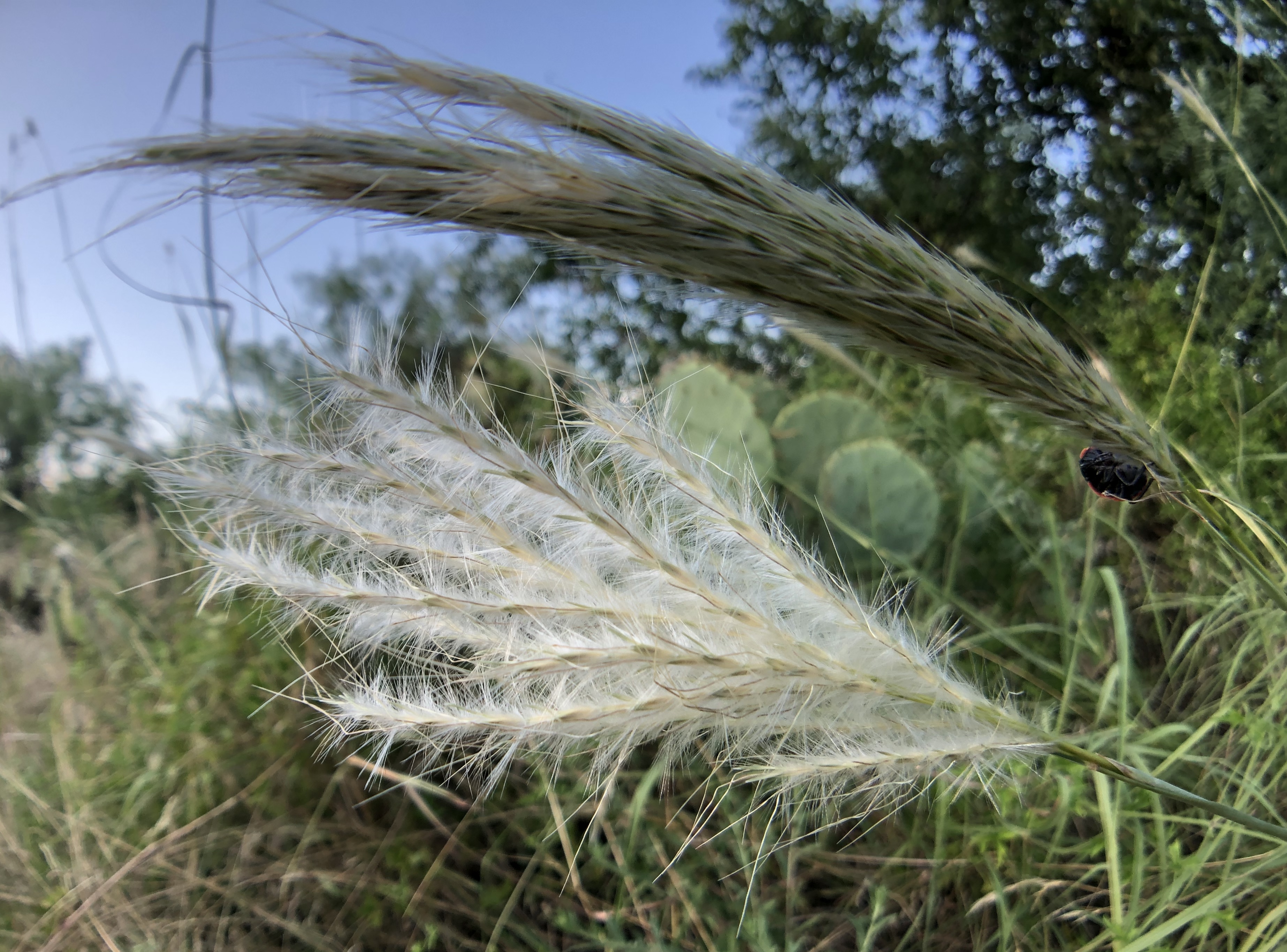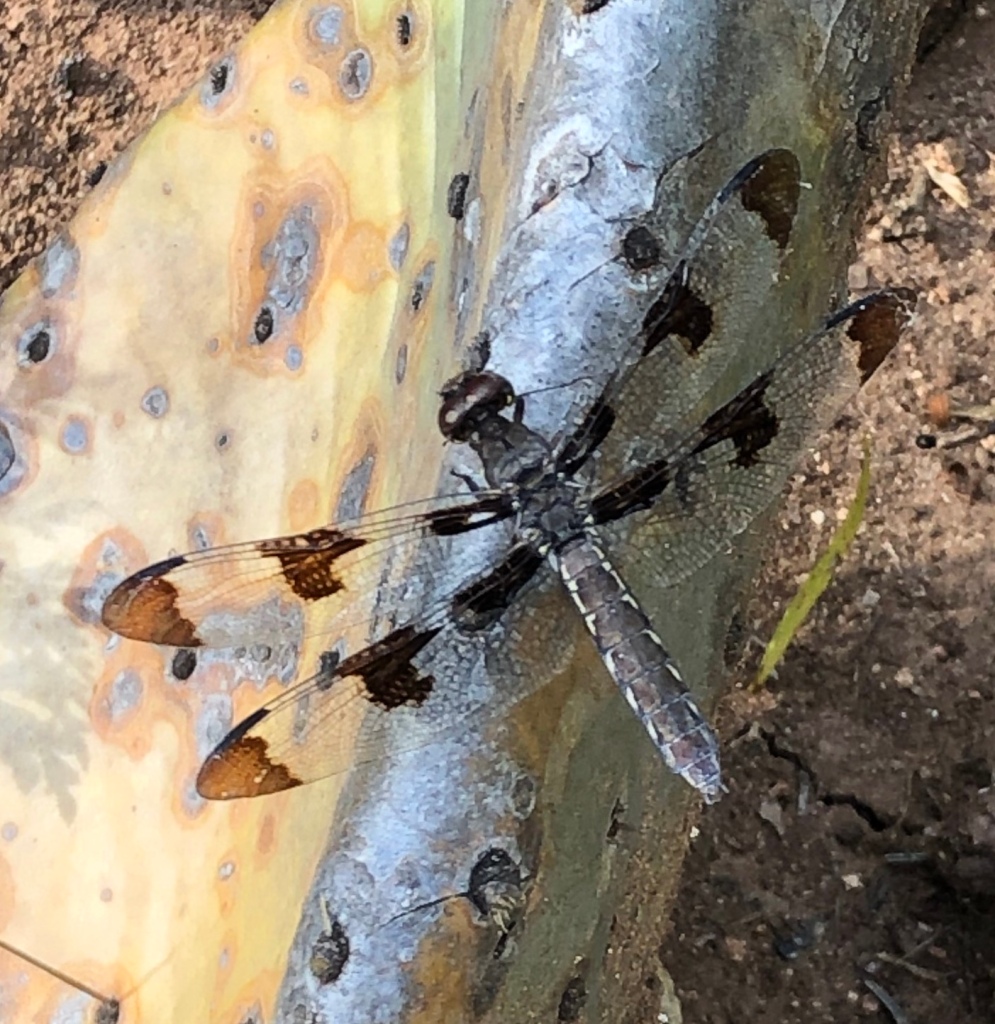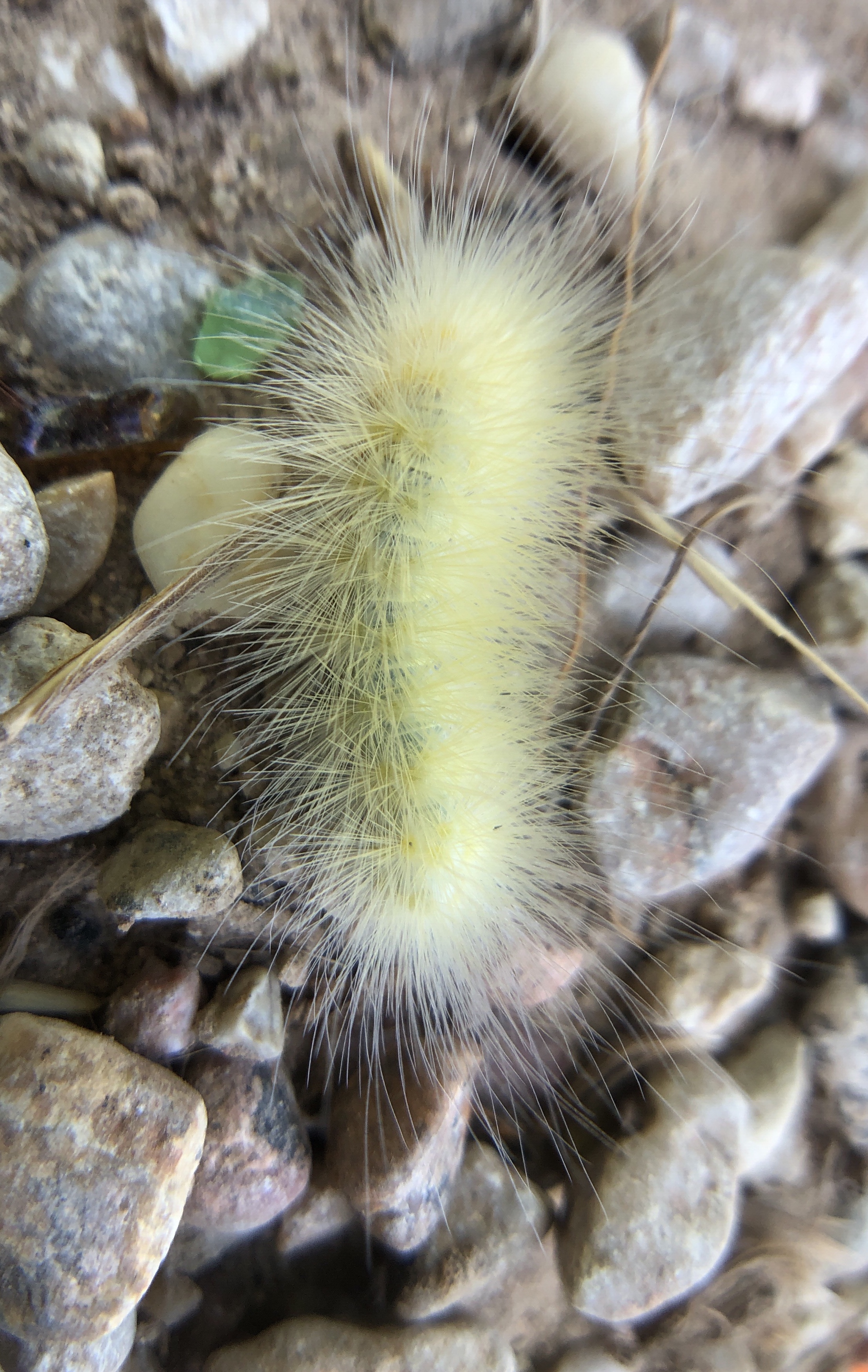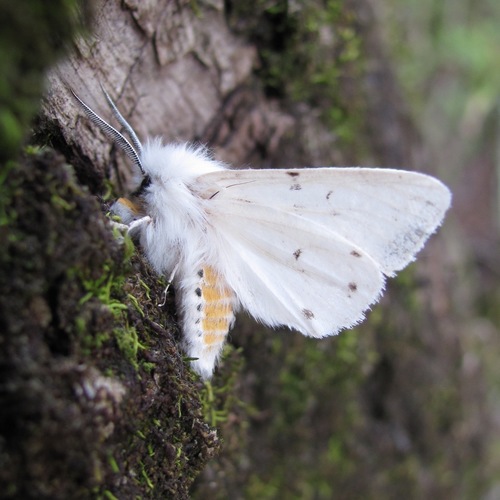
Twice-Stabbed Lady Beetles are are hungry, voracious predators that have very strong chewing mouthparts that enable them to chew through the armor covering of many scale insects, which are parasites on plants. This is why Lady Beetles are welcome in the garden.

But why the red spots on a shiny black body? The red and black coloring is likely an advertisement to potential predators that this bug may taste very bad or may even be toxic. In fact, these bugs are known to emit a repulsive smell from their legs. Warning coloration such as this is common in nature and is referred to as aposematic coloration. Think bees and wasps and even the black and white stripes of a skunk! The major predators of these beetles would be small birds and lizards. Here’s your chance to do some observational field ecology and gather some data on the warning coloration hypothesis.


